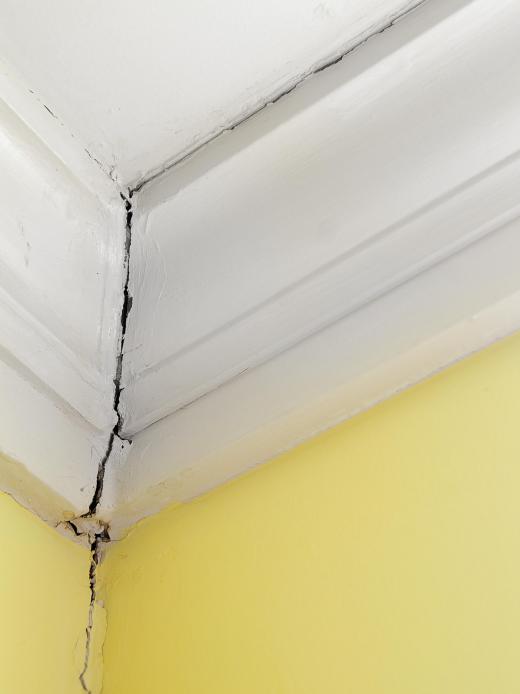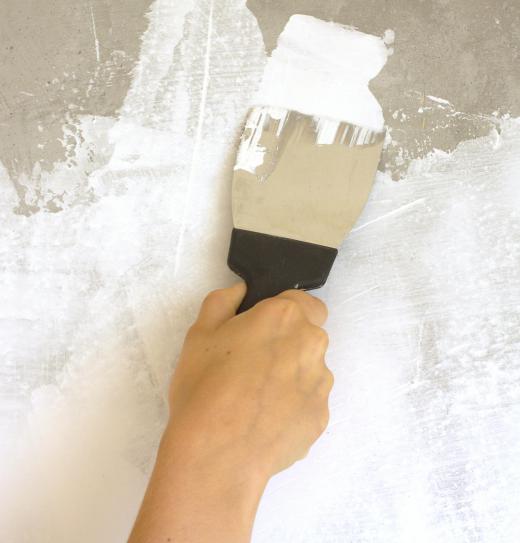A stress crack is a crack in a surface caused from stress or the settling of building materials. In a wall, it is often the result of the building's foundation settling. In a vehicle's windshield, a crack can be the result of too much chassis twisting while negotiating a hilly or bumpy surface or when applying too much power to the tires in high-performance applications. Most stress cracks can be easily repaired, but some are a sign of a much more serious problem yet to come.
In brick buildings or cement block foundations, the sight of a crack caused by stress is not uncommon. Through years of settling, the building will begin to flex and twist, often showing up as a crack in the mortar. In some severe settling, actual bricks will crack in half as the settling advances and becomes more severe. This most often happens around and over windows and doors.

In some poured cement walls and barriers, large cracks can be found as the footings settle and move. These seldom penetrate all the way through the concrete wall, but they can cause the wall to break apart and fall in severe cases. The use of reinforcing wire and steel rod often help the concrete to resist succumbing to a stress crack.
The surface of the planet is in constant shift, and settling and motion in the Earth's crust often causes man-made objects to crack as time passes by. This is perhaps most noticeable in the drywall of an average home. Drywall or plaster board is a soft material that is prone to cracking and breaking under stress. As the wall settles, the drywall begins to settle with it, and the wallboard cannot flex more than a very small amount before it begins to crack. In some extreme situations, a single sheet of drywall may contain two or more crack locations.

A stress crack can be repaired very easily using spackling compound or cement, but it will almost always crack again as the settling continues. Most buildings continue to shift and settle for the duration of their lives, so the cracks will reappear at the stressed locations. As very few buildings settle all at once, an area that has not yet settled will likely crack the repaired section of wall once it eventually does.
